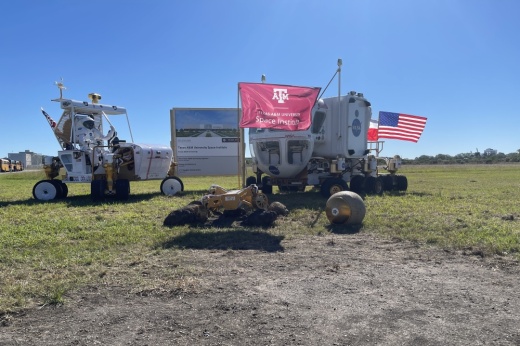What you need to know
The groundbreaking was the kickoff event for a 22-month project to build out the $200 million space institute, which, in several ways, will be the first of its kind in the United States, Community Impact previously reported.
The project is the first of several to come to Johnson Space Center’s new Exploration Park, which will take up more than 200 acres outside the fence of the facility, officials said.
With several space-related missions planned in the coming years, officials hope the park can help solve several issues prior to sending humans to space. Some of what the park will do includes:
- Bolster the economy
- Assist in building professional pipelines
- Experiments and tests related to space exploration, including in robotics, aeronautics, simulations and habitats
Diving in deeper
Among a litany of private, public and academic partners set to move into the park in the coming years, Texas A&M will be its first tenant, officials said.
Its new space institute will house the world’s largest climate-controlled lunar scape and Mars scape, Community Impact previously reported. The institute will also be the first of its kind in the United States.
NASA’s Johnson Space Center Director Vanessa Wyche emphasized at a program prior to the groundbreaking the importance of the role the park will play in future space projects.
She also underscored the private and public partnerships that are anticipated as part of the project.
“When we go to the moon this time, our intent is to do it differently,” Wyche said. “We’re going to be doing it with international partners, commercial partners, as well as with the government and academia.”
Remember this?
Earlier in November, Texas A&M’s Board of Regents approved $500 million in construction costs for a number of projects, one of which was the space institute for $200 million, according to a Nov. 7 news release from the university.
It was one of several steps taken by NASA and Texas A&M this year on the space institute and space projects in general. In February, the pair signed a lease agreement, which officials at the time considered the first domino to fall in building out Exploration Park.
In the weeks after, Johnson Space Center also began signing other development agreements with companies and public entities as well, including with American Center for Manufacturing and Innovation, or ACMI, to occupy spots at the park.
The project itself stemmed from Texas House Bill 3447, passed in 2023 and authored by state Rep. Greg Bonnen, R-Friendswood. The bill allocated $350 million for space-related development in Texas. The $200 million for Exploration Park was included in that total.
As part of that, Texas officially created the Texas Space Commission earlier this year as well, which is tasked with helping direct upcoming projects related to the space economy, among other tasks.
Stay tuned
The project is expected to take 22 months to build, said Robert Ambrose, Texas A&M Space Institute associate director.
The institute though is just a precursor to a slate of space-based missions planned in the coming years.
Among the list, NASA will look to put astronauts in low earth orbit, in orbit of the moon and, eventually, land someone on the moon again, Wyche said.





